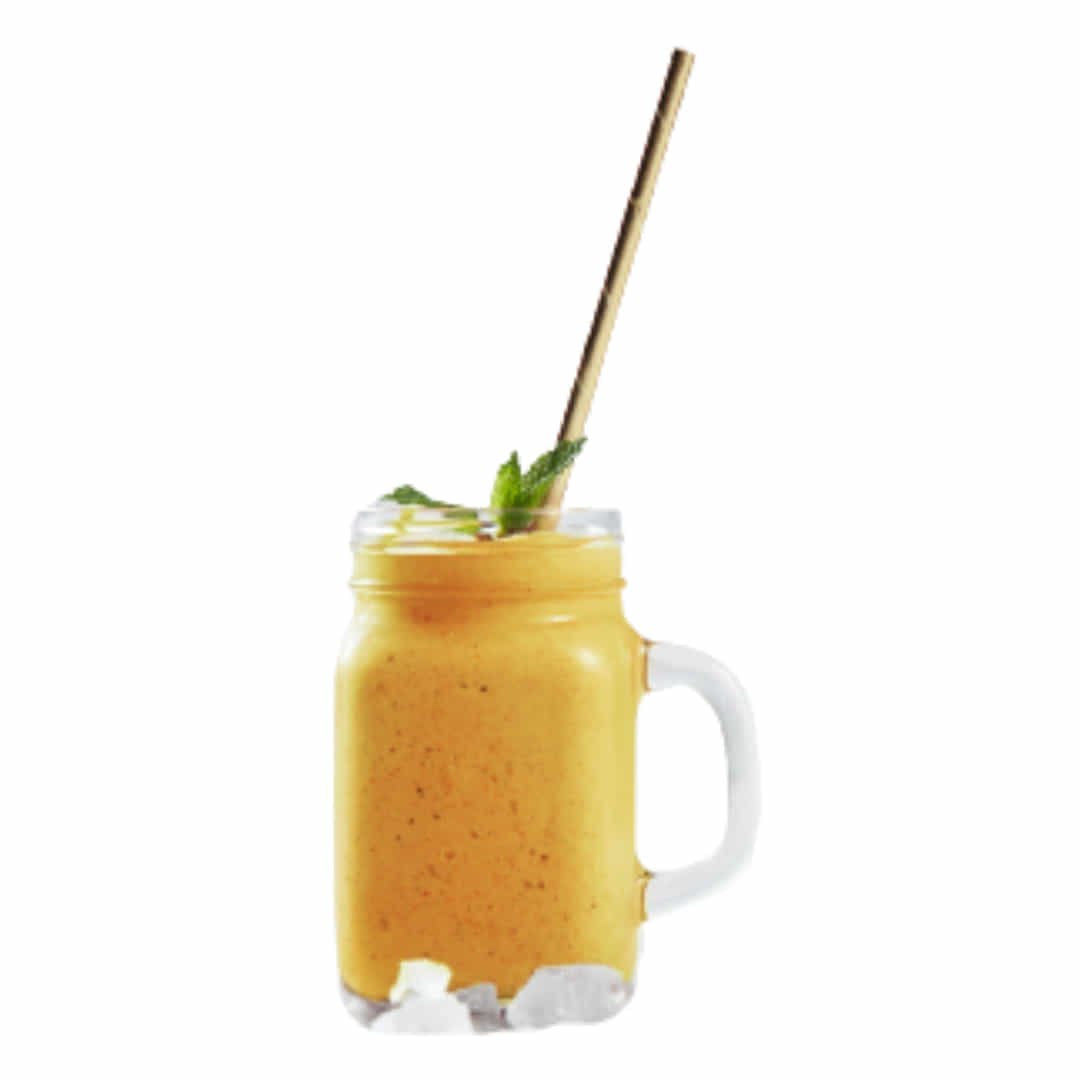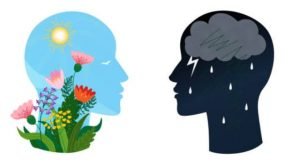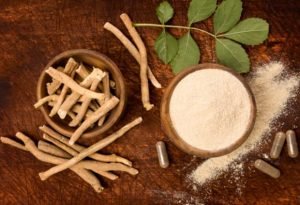
by admin | May 30, 2022 | Recipe
A Morning Smoothie to Help You Stop Constipation
Chronic constipation can be hard to control or eliminate, since the colon can become weak. In most cases it will have to actually be retrained on how to have a bowel movement.
For those of you that have mild constipation, prevention is always better than cure. So, here is a morning smoothie that will help activate your colon. This smoothie is packed with nutrients that your body will use to regenerate your colon and body. I have been making this smoothie for a few years. I make enough to drink right away and to put into my thermos to drink around 10am.
When I make this smoothie, I just started by putting things in the blender without too much measuring. You can do the same and make adjustments as you go. It’s not really essential to get everything spot on and you may prefer a little more or less of something so I’ve left it a little free to do as you feel.
But below is a basic guestimate…
- * one to two peeled bananas
- * 4-5 strawberries or other type of berries, or fruits
- * one tablespoon of lecithin granules
- * one – two teaspoons of flax seed oil
- * half and half almond milk and apple juice
In a coffee grinder, grind up around a teaspoon or less of the following:
- * brown sesame seeds – are high in lecithin, vitamin C, E, and Calcium. They improve liver function and help in constipation
- * sunflower seeds – are high protein, Calcium, and iron. They are one of the best natural foods which feeds the entire body.
- * flax seeds or linseeds – are high in fibre and provide bulk for your stools.
- * almonds – use around 5-6 no more. They are high in Calcium, Phosphorus and have some B-vitamins. Only eat a small amount. They are high in calories.
After grinding the seeds, place them in the blender and blend everything till smooth. If you need a little sweetness, you can add a small amount of stevia or agave nectar. I find this drink plenty sweet without any though. Sometimes I will add the powder of a few acidophilus capsules.
If I don’t add the almonds, I just put all the tiny seeds into the blender without grinding them up in the coffee grinder first. The blender will break them up easily. In fact if you have a powerful blender it will probably do all the nuts, seeds and everything in one go. This is a powerful smoothie to give you morning power and to activate your colon to get moving.
Enjoy

by admin | May 30, 2022 | Recipe
A Natural Herbal Remedy Could Be Your Answer.
Ideas and recipes.
The popularity of herbal remedies is rapidly causing traditional medical practitioners to recognise the useful properties of the hundreds of thousands of known herbs that are able to heal and prevent many human and animal illnesses, as well as enhancing mental attitude, appearance, and performance.
Many centuries of experimentation by many cultures, including Indian herbal medicine (Ayurvedic), Chinese herbal medicine, and Western herbal medicine, have led to a variety of uses for plants, either singularly or in compounds. Herbal remedies can encompass anything from teas to complex preparations of herbal compounds used in hospitals or clinics. Many types of formulas are available such as pills, capsules, creams, and gels.
Your home may already contain some of the following herbs as food:

- * Garlic – Reduces cholesterol and is a natural antibiotic
- * Cinnamon – Lowers blood sugar, cholesterol, and triglyceride levels
- * Ginger – Reduces blood clotting risk and prevents motion sickness
- * Chamomile Tea – Soothes nervous tension and helps relieve digestive problems
- * Peppermint – Beneficial for digestion and digestive problems
To achieve a specific result, these herbs can be combined with other natural products.
While traditional medicine is extremely useful for diagnosing and treating emergencies, traumas, and surgeries, it is rarely adequate for preventing disease. Due to the ever-increasing cost of medicine, the increasing waiting times for doctor appointments and the difficulty of obtaining prescriptions from doctors, more and more people are turning to natural remedies.
There are many adverse effects associated with traditional medicines. As with conventional medicines, natural remedies are not always safe and may cause unwanted side effects. However, a large number of the population have been using herbals, vitamins, minerals, and amino acids for many years with very positive results.
Herbal products can be used by adult, child, and pet to treat countless medical conditions ranging from Angina, to Arthritis, to skin care, thyroid treatment, urinary tract infection, and an endless list of others. The development of new products has expanded beyond curing disease to address a variety of conditions, such as quitting smoking, removing unwanted hair, and eliminating wrinkles among others.
You may find your answer in one of the many natural herbal remedies.
Ayurveda provides numerous simple recipes for treating a wide variety of disorders. You will find below, some recipes that are highly recommended to those suffering from digestive problems. These are simple and effective remedies that can be made at home easily to help correct a digestive disorder and replenish nutrition that has been lost.
I hope you find some healing in them
Gruel recipes

- Indigestion
Ingredients:
- Rice -1/2 cup
- Water – 4 cups
- Long pepper – 2 or 3
- Ginger -1inch
Method of preparation:
Combine rice and water with ginger and salt and cook according to instructions. Powder long pepper and fry it in a spoon of coconut oil ( if vegan) ( ghee is in the original ayurvedic recipe) and add it to gruel. Consume this when it is hot. This is very light to digest and relieves colic pain.
- Diarrhea
Ingredients:
- Rice -1/2 cup
- Water – 4 cups
- Ginger paste – 1/2 spoon
- Salt to taste
- Pomegranate juice: one cup
Method of preparation
- Cook rice with recommended quantity of water with ginger paste and salt
- Add pomegranate juice when the gruel is warm. You will be rehydrated and full of energy after eating this gruel. Inflammation of the intestinal walls is soothed and bowel movements are controlled.
- Flatulence
Ingredients:
- 1 cup of rice
- 4 cups of water
- Haritaki (Terminalia chebula) – powder-1/2 spoon
- Roots of pippali or long pepper
- Ginger paste -1/2 spoon salt to taste
Method of preparation
Cook Rice, haritaki powder , roots of pippali and water together. Add salt to it. Eat it when it is warm. This regulates bowel movements and relieves flatulence
- In indigestion due to overconsumption of oily food
Ingredients:
- 1 cup rice
- 4 cups of water
- 1 cup plant milk ( if vegan) ( buttermilk is in the ayurvedic original recipe)
- Salt to taste
Method of preparation
Cook rice water and salt together. Add a cup of plant milk when it is a little warm and consume it. This relieves indigestion, nausea and corrects digestion.

by admin | May 30, 2022 | Diet
A Short Guide To Protein
Protein is without a doubt one of the most discussed nutrients we get from food on a daily basis. There have been many debates and myths surrounding this nutrient, so in this article, our goal will be to tell you more about everything you NEED to know regarding protein.
Is Protein The Most Important Nutrient?

The word “Protein” comes from the Greek word “Protos” meaning “first/primary” and that in and of itself should speak about the importance of protein. Even more so, if you look into biology, most of the body was made out of protein, including muscle tissue, enzymes, hormones and others. Now, when it comes to ESSENTIAL nutrients, there are two of them – Protein & Fats.
Protein and fats provide essential amino & fatty acids, respectively, which the body needs but cannot produce on its own. This is why deficiency in those nutrients can lead to unwanted side effects, such as low libido, poor recovery, worsened hormonal function, brain fog and others.
How Much Protein Do I Need?
The widely recommended protein intake has circled around 1 gram of protein, per pound of bodyweight, per day. In other words, if you weigh 180 lbs, you’d need roughly 180 grams of protein per day. However, this appears to be more relevant for actively training individuals that hold more lean body mass.
In other words, if you don’t really hit the gym very often, you’d need about 0.6-0.8g of protein per lb of bodyweight, to sustain health and optimal functioning. On the other hand, if you are very active and use your muscles, you’d be closer to 1g of protein per lb of bodyweight.
What Are The Best Sources Of Protein?

If there is one thing to know, that is namely the fact that not all proteins were made the same! Proteins are made up of amino acids – There are a total of 20 amino acids and 9 of them are essential. On top of that, each food provides protein that is digested, absorbed and retained differently. Based on the amino acid profile, as well as other properties like the ones we just mentioned, each food can be rated in terms of bioavailability.
The bioavailability is a fraction of a nutrient in certain foods, that is absorbed and used.
The things that change the biological value of foods are their chemical form, interactions with other compounds, as well as individual physiological responses to food.
Here’s the punchline…
Animal products appear to be of the greatest biological value for the human body! These are the foods that provide all essential amino acids, along with healthy fats and a multitude of vitamins. Nevertheless, mass-production of animal products implies unnatural growth, where the animals don’t have enough room to run freely and are fed with processed, low-quality animal foods.
For this reason, we have put up a list of the BEST animal sources of protein:
- Grass-fed beef
- Wild-caught salmon
- Free-range chicken
- Pork
- Cheese & Other dairy
- Eggs
Most of these foods are saturated with quality protein, meaning that you will need just a couple of portions to meet your daily needs!
What If I’m Plant-Based?

As we mentioned, animal foods are the only products that contain the full set of essential amino acids, along with the greatest bioavailability. Plant foods unfortunately lack one or more essential amino acids and take up a lot of space in the stomach, for little caloric value. Nevertheless, if you’ve decided to not eat meat, your best bet would be to combine different plant products, in order to compensate for their lacking nutrients.
Here are some of the best plant-based protein sources:
- Lentils
- Beans
- Other legumes
- Cashews
- Almonds
- Edamame
- Tahini
- Peanut butter
- Peas
- Macadamias
In combining those, you will be more inclined towards providing sufficient amounts of protein for your body, on a daily basis!
Protein Timing
Now here’s for a brief mention – If you want to further optimize your protein intake and how it’s being used, try timing it to your workouts. Have a solid protein feeding 2 hours before your workout, and then within 2 hours AFTER the workout. This will give you a slight boost in terms of the constructive, anabolic processes that happen after the workout.
Conclusion
Protein is a powerful nutrient that keeps us healthy, alive, well and recovered, which is why, you just can’t ignore it! Place quality, protein-rich products at the core of your daily nutrition and you will see the difference for yourself! Focus on quality-fed meats, along with some dairy and eggs, and if you are a plant-based eater, just stick to grains, legumes, nuts and seeds!

by admin | May 30, 2022 | History
Alan Watts
Or The Man Who Built Bridges Between Worldviews Alan Watts was an English philosopher and speaker who lived in the 20th century and was one of the most influential thinkers of his time. He is famous for popularizing Asian traditions and philosophies, namely Buddhist, Taoist, and Hindu beliefs in the Western world.
He was also one of the first people to start talking about the different forms of psychedelics in his literature. He wrote a whopping amount of books (more than 25) in his lifetime, a few of them becoming bestsellers. He was also recognized for his lectures, talks, and broadcasts all over the world.
This is his story.

Alan Wilson Watts was born in 1915 in England to a businessman father and a housewife mother. His interest in Asian culture and Buddhism was formed at an early age because of two main things. One – he was raised by an Anglican Christian family on his mother’s side and had Christian training in his boarding school.
The latter he often described as “grim and maudlin,” which translates his opinion on this sort of teaching quite prominently. Two – he had an interest in Asian culture and art ever since he was a kid, describing them as flowing of life and showing the connection between man and nature.
Also, as a teenager, he spent most of his holidays with a close person who had a lot of knowledge and books on Buddhism and other eastern philosophies, having similar beliefs herself. At the age of 16, Alan took the first step to choosing Asian beliefs over Christian ones and became the secretary of the London Buddhist Lodge.
He became fascinated with the study of Zen, and although he didn’t study it formally, it remained one of his bigger interests. He later married Eleanor Everett, who was also interested in Asian culture, and in 1938 they moved to the US. After some time, they divorced, and he was married two more times to different women.
When he started living in the USA, he obtained a master’s degree in Theology and began teaching in the American Academy of Asian Studies alongside some of the more prominent Asian professors.
He also started learning the Chinese language and scripture. His lectures in the academy were extremely popular and often transformed into late-night open talks which took place in local coffee shops. In 1953, after leaving the academy, he started working in a radio station and began airing a broadcast that lasted more than ten years.
There are many radios which to this day still have a weekly Alan Watts program because of its lasting popularity. While working on the radio, he published one of his more famous books – The Way Of Zen, which deals with the general philosophy and history of Zen. During this time, Alan also published a book in which he explains his relationship with psychedelics.
A very famous quote depicting his view on this type of substance is, “If you get the message, hang up the phone. For psychedelic drugs are simply instruments, like microscopes, telescopes, and telephones. The biologist does not sit with eyes permanently glued to the microscope. He goes away and works on what he has seen.”
In the late 60s, Watts was seen by the public as a spiritual figurehead in the “counterculture” movement – a worldview about a more peaceful way of life. This group of people opposed the Vietnam war, commercialism, and bigger societal norms, and Alan was one of their most avid speakers.
Watts believed in social over personal ethics.
This was valid both for man’s relationship with nature and the governments’ relationship with individual citizens. He tried his best to be a bridge between culture and nature, East and West, more ancient beliefs, and modern life. Alan shared these views with the world in the best way he knew how – by talking about them. He had many lecture tours during his last years, between which he spent his time writing in Druid Heights – an artistic bohemian countryside in the mountains of California.
He died there aged 58 after one such tour in the US, Canada, and Europe. His lectures became even more famous after his death, and many people deem them just as relevant today. You can find his work in almost all forms of communication – books, videos, and broadcasts about him and his life or simply his lectures are all easily accessible and very popular.
Alan Watts was certainly a memorable person who led a peculiar life. The influence he had and the lasting relevance of his ideas are a resounding statement that his way of thinking was interesting, to say the least. We believe that learning about people like him broadens our perception of the world. So grab one of his books and see his ideas for yourself!

by admin | May 30, 2022 | History
Albert Schweitzer
A Man With Many Talents
People overall are extremely talented and capable. We can do multiple things and constantly improve them just because it makes us feel good. This man is a great example of how a person can achieve a lot in a lifetime if he sets his mind to it. Here is the story of Albert Schweitzer.
Bibliography

Albert Schweitzer was born in 1875 in Alsace, France, and grew up there. His father was a pastor in the local church, which was the place of worship both for Protestants and Catholics. That’s why he adopted the view that Christianity as a whole should support both types of faith and try to unite them.
His love for music is also rooted around this church – he started playing the organ when he was just ten years old. As he grew up, he started loving music more and more, but his main interest kept on being religion. He obtained a theology degree at the University of Strasbourg with a PhD dissertation on “The Religious Philosophy Of Kant.”
He continued to study the piano throughout his youth and managed to visit the Bayreuth Festival, which was dedicated to one of his favorite composers – Richard Wagner. At the age of 30, he started studying medicine in order to obtain a degree and be allowed to work as a physician.
Soon after he took his final exams, he married Helene Bresslau, and both of them moved to Africa to work. They came back to France during the First World War, and then he returned alone to Gabon to finish building his hospital. When he came back to Europe, he started writing his most precious work – “the Reverence for life.”
In his personal life, things changed a lot as well. He had a daughter, and the entire family moved to Germany. After many more but smaller adventures, the family settled there. He died in his own hospital in Gabon in 1965. After his death, his house in Germany became a museum.
Theology

Albert Schweitzer published two books regarding religion. The first one (which established his reputation) was about how people see Jesus. In that book, he argues that most religious people view Christ too romantically, which was not the original purpose. He believes that Jesus and his followers should be seen for their hardships and realism, not for their divinity.
The second book was also controversial. Its main purpose is to distinguish two sorts of mysticism – primitive and developed. For the author, primitive mysticism is one which cannot make sense of the universal or eternal. In contrast, a developed mysticism sheds light not only on these monumental topics but also on our relationship with them.
Music

Albert was the pioneer regarding a few things connected with music.
He was the first to interpret Bach’s music with symbols and pictures which gave the start of a new understanding and teaching of Bach’s art in general. This opened the doors for Schweitzer and his dear friend Widor to co-find the Paris Bach Society. In later years he was asked to play as the organist in Spain, and he regularly performed in Paris.
He was also the first to propose mixing the German and French versions of the organ (they have different pipe systems) and to later have this improved version built. The musician even received his very own pedal piano – an instrument resembling the organ in sound.
Medicine
After obtaining his medical degree, Albert and his wife moved to Gabon, Africa, and established their very own hospital. In the first 9 months alone, they took care of more than 2000 patients, some of which traveled for days to reach the location. They built their first actual building just before World War I broke out but had to leave it behind and return to France.
After taking care of his health Albert came back, this time without his wife, to finish what he started. Although everything was decayed and a lot of patients needed looking after, he and the locals managed to rebuild everything. Not only that, new hospital wings were added, and a secure medical team was assembled. After three years of incredibly hard work, Schweitzer returned to his wife, leaving behind a fully functioning hospital.
Reverence For Life
This is the work of the author for which he received a Nobel Peace Prize in 1952. In it, he explains his visions on philosophy. For him, the reality is objectively neutral – it holds no faith. Ethics then should be humankind’s responsibility. He sees every single person as responsible for his or her own faith and worldview.
According to him, respect for others was a natural phenomenon. Albert believed that the will for life is innate, and love is both an evolutionary necessity and a spiritual idea. He also connects this belief to that of Buddhists.
Albert Schweitzer was a very interesting man that led a fascinating life. He was an avid pianist, a theologian, and a philosopher. His life was filled with hardships, but he got through them all thanks to his way of thinking. We believe that he is a source of inspiration, if not for his specific talents, for his dedication.





















